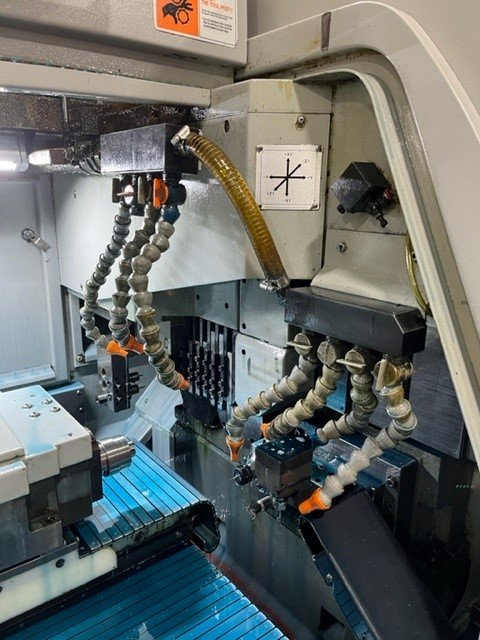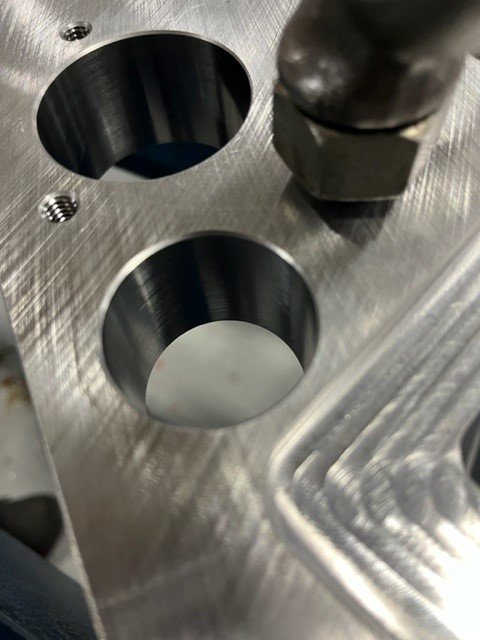The Numbers Game
There’s a complacency some machine operators can contract over time when presented a new product or machine tool workaround. These new advancements don’t necessarily frighten, it’s more a case that when an operation works well it’s advantageous to leave well enough alone. While many engineers prefer to keep things simple, safe and risk-free, occasionally a new technology offers a unique opportunity to increase productivity.
Tool-X is a nanofluid that changes the characteristics of existing metalworking fluids by ‘manipulating’ speeds, feeds and metal removal rates using nanotechnology. The science behind Tool-X can potentially change metal cutting dynamics, improve surface finishes and extend tool life. The backstory of this technology is just as fascinating as its production results.
What’s a Nano-Onion?
There’s a specialized group of scientists and engineers that think on a microscopic level — atoms, molecules, your basic nanotechnology fundamentals. Jim English, president of Tool-X, knows a thing or two about trying to explain the benefits of nanotechnology to potential customers in manufacturing.
“First, it’s extremely heavy on the science,” English said. “As you’re talking about chemical reactions at the microscopic level to a customer you start losing them. The explanation of the process takes longer than the actual process itself.”
For this reason, English has been known in the past to refer to the technology as ‘magic dust’ and prefers to go straight to discussing production gains. A brief explanation, however, works to convey what Tool-X really is and what it can do for a gear shop.
Some of the most fascinating carbon forms in the scientific world are nano-onions. In short, these nanostructures possess great versatility and applicability in areas like medicine, material science, additive manufacturing, plastics, packaging, and nano lubricants. An enlarged photo of a nano-onion looks like an onion sliced right down the middle, hence its name.
“The best way to describe how Tool-X works is the DNA cartoon from the film Jurassic Park,” English said. “We’re taking carbon through a nanoreactor and making different blocks of carbon with different DNA. I tend to use LEGO blocks to explain how we modify and manipulate these carbon blocks.”
English said that Tool-X carbon nanoparticles work in both cutting oil and water-based metalworking fluids. The physical properties of the carbon nanoparticles enhance both cutting tool and metalworking fluid performance by reducing the friction between the blade and the chips, conducting heat away from the cutting edge of the tool, removing build-up on the contact surfaces and strain hardening (shot peening) the metal surfaces of the tool. These inert nanoparticles withstand high temperatures and don’t break down. To the naked eye, these particles look like dirt, but there’s much more going on under the surface.
Tool-X (2003) was originally developed by the U.S. government and brought to the public through a technology transfer program that included the invention of undershirts, sunglasses, synthetic rubber, microwave ovens, GPS and M&Ms — yes, it’s true that our favorite hard-shelled candies were given to American soldiers as rations during World War II due to their heat-resistance before appearing in candy aisles.
Another government-led transfer program was Rain-X, the water beading technology that used a hydrophobic silicone polymer to force rain off windshields. This is ultimately the technology that opened the door for Tool-X in manufacturing applications.
Metal cutting fluids utilizing nanotechnology provide optimal results over time.
Science & Progress
English said that the biggest challenge with nanotechnology is understanding nanotechnology.
“Engineers and scientists need to know the why and the how. How does it work? Why does it work? This is one of the most challenging aspects because they don’t understand how a nanofluid like Tool-X can improve productivity,” English said.
The lack of nanotechnology education — particularly in manufacturing — plays a role. While Europe and Asia are fully committed to nanotechnology education at the grade school, high school and college levels, it’s different here in the United States.



